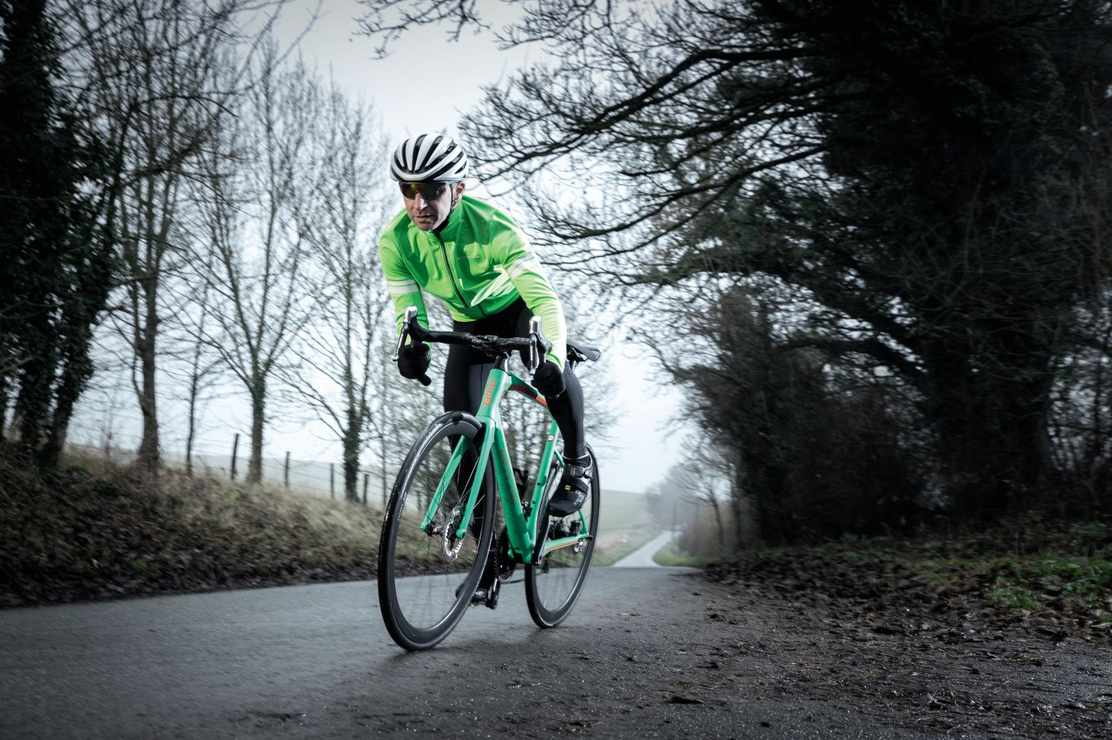Ribble’s mission statement for the CGR is simple, its acronym standing for ‘cyclocross, gravel, road’.
Ambition and versatility are both great values for a bike to possess, just as long as it lives up to its stated expectations.
On paper, the CGR comes equipped with all the attributes it needs to fulfil each potential use, such as 700c or 650b wheel size options and generous tyre clearance.
However, is it enough to see the bike master all three disciplines?
Ribble CGR AL frame
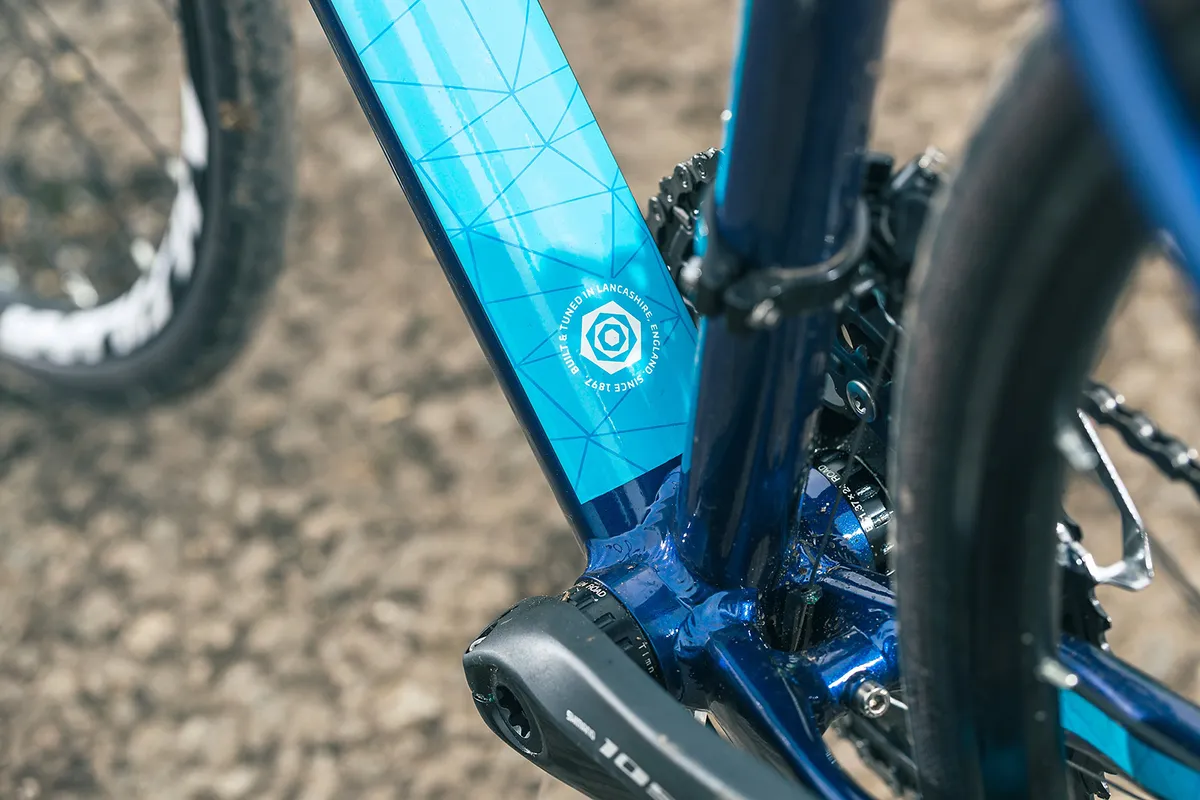
The CGR’s frame is constructed using 6061-T6 heat-treated aluminium tubes, which are hydroformed to produce the frame’s desired tube profiles.
Both the oversized down tube and the top tube have rounded, inverted triangular profiles.
The chunky, ovalised chainstays are crimped for extra clearance, and the seatstays are kinked above the dropouts – a feature usually employed to improve vertical compliance.
The carbon fibre fork features a tapered steerer and masses of tyre clearance. There’s internal brake hose routing on the left side, and provision for hub dynamo wiring through the right fork leg.
There are mounts for 46mm-wide full mudguards, a rear rack and a third bottle cage below the down tube.
Ribble CGR AL geometry
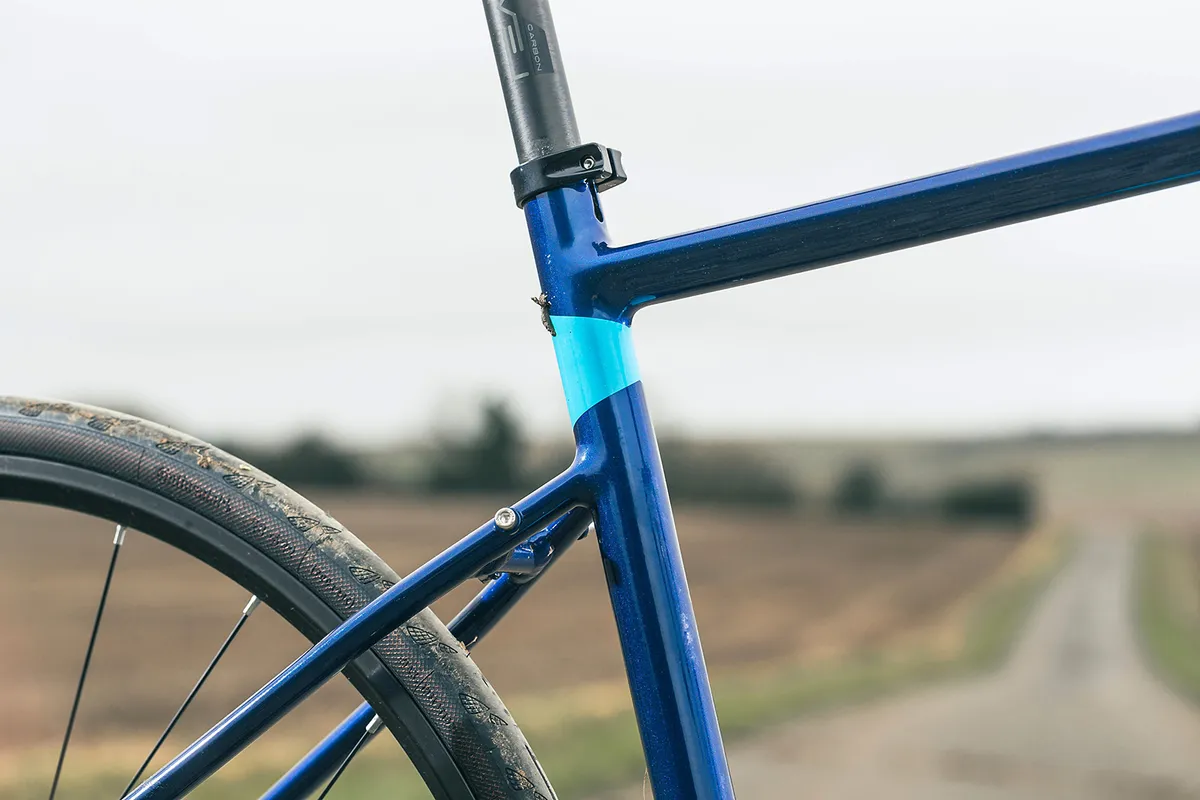
As a 5ft 10in (178cm) rider, Ribble’s geometry chart placed me on a medium-sized CGR, which was an ideal fit.
Specific cyclocross, gravel and road bikes will have their own geometry leanings, but the CGR is designed to take elements from each discipline.
Its sloping top tube is 55.5cm long and the head tube measures a tall 170mm.
A road-bike like seat tube angle of 73.5 degrees pitches you forward over the bottom bracket slightly, combined with a very gravel-esque, slack head tube angle of 71.5 degrees to soften front-end handling.
The chainstays are 435mm, and the generous 50mm fork rake results in a long 1,036.8mm wheelbase. Reach for this size is 380mm, and to boost its off-road clearance, the CGR has a bottom bracket drop of 69mm.
| | XXS | XS | S | M | L | XL |
|---|---|---|---|---|---|---|
| Seat angle (degrees) | 75 | 74.5 | 74 | 73.5 | 73 | 72.5 |
| Head angle (degrees) | 70 | 70.5 | 71 | 71.5 | 72 | 72 |
| Chainstay (mm) | 435 | 435 | 435 | 435 | 435 | 435 |
| Front CENTRE (mm) | 580 | 595 | 605 | 611 | 616 | 630 |
| Seat tube (mm) | 450 | 470 | 510 | 530 | 555 | 580 |
| Top tube (mm) | 500 | 520 | 540 | 555 | 570 | 590 |
| Head tube (mm) | 120 | 140 | 150 | 170 | 190 | 200 |
| Fork offset (mm) | 50 | 50 | 50 | 50 | 50 | 50 |
| Bottom bracket drop (mm) | 69 | 69 | 69 | 69 | 69 | 69 |
| Wheelbase (mm) | 1,005 | 1,021.5 | 1,023.1 | 1,036.8 | 1,041.8 | 1,055 |
| Stack (mm) | 538 | 556 | 568 | 589 | 610 | 620 |
| Reach (mm) | 356 | 365 | 377 | 380 | 383 | 395 |
Ribble CGR AL specifications
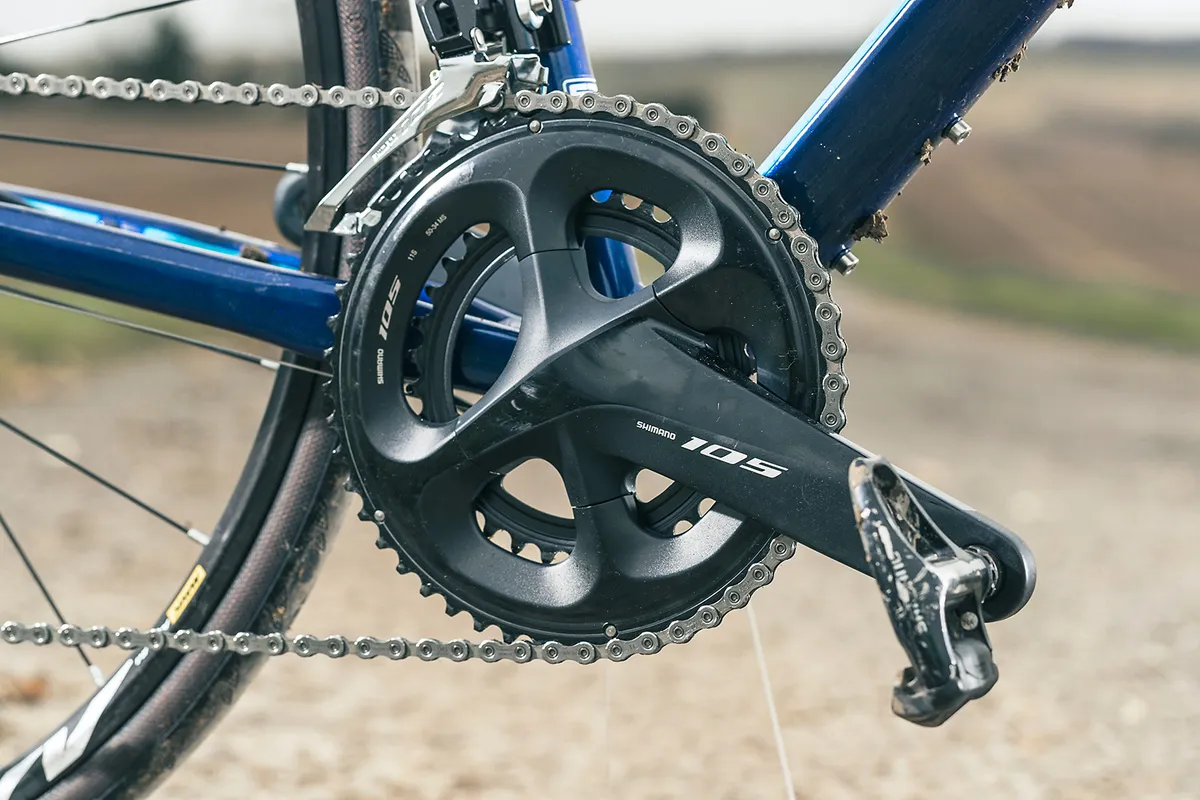
The CGR AL is offered in a standard build – with Shimano Tiagra R4700 – but Ribble’s BikeBuilder function enables customers to configure their build with numerous options.
The bike tested was upgraded with a complete Shimano 105 R7000 groupset, including a 50/34 compact crankset, 11-34 cassette and hydraulic disc brakes with Shimano disc rotors.
The Mavic Aksium DCL 19 wheelset comes fitted with 28mm Continental Gatorskin tyres.
The bike is completed with Ribble’s own-brand Level alloy bar and stem, plus carbon fibre seatpost with a Fizik Antares saddle.
All in, it adds up to a bike that weighs a competitive 9.39kg.
Ribble CGR AL ride impressions
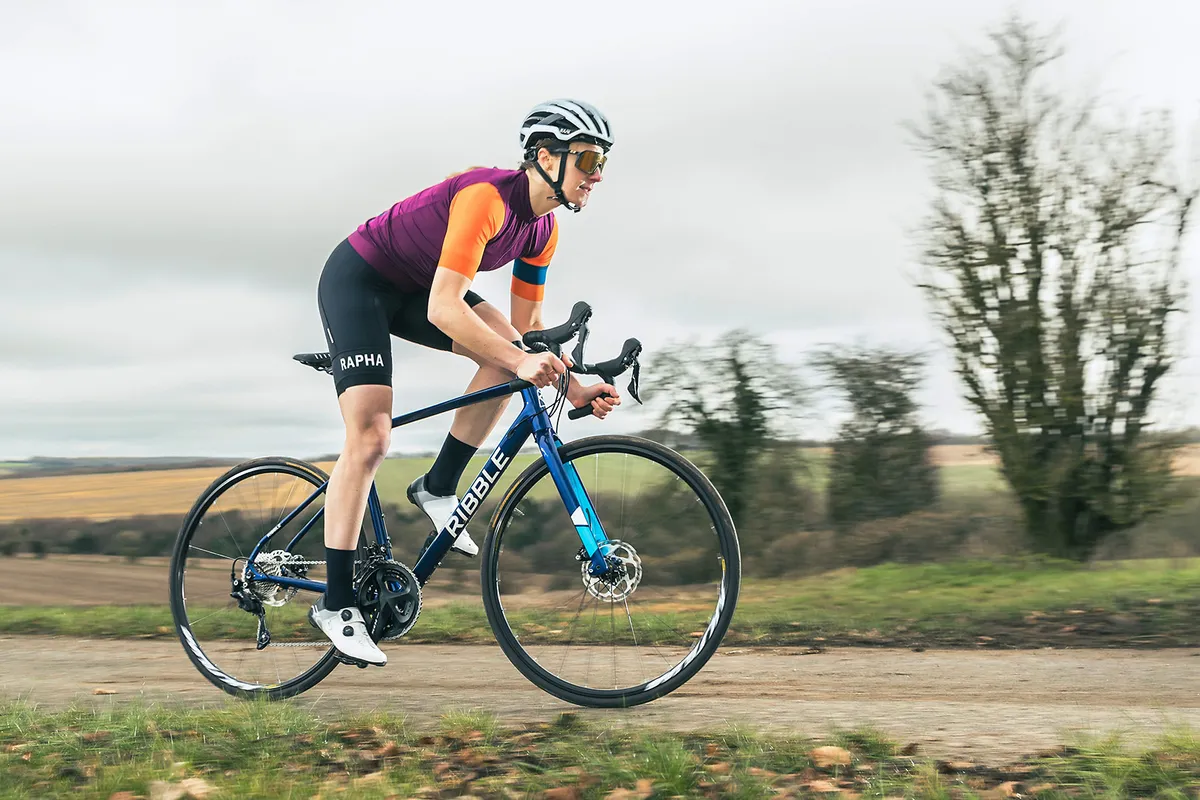
The CGR AL is designed to cope with multiple uses, on, near and away from tarmac, so ideally needed to be tested on mixed surfaces.
The limiting factor with this particular build was the 28mm road bike tyres. While it's possible to ride a long way off-road on slick road tyres, it’s not an ideal solution, and doesn’t examine the bike’s true capabilities.
The Ribble was ridden extensively on tarmac, some of which was so broken and scarred it was almost equivalent to a gravel road.
Firm and mostly dry trails that link together road sections, fairly smooth bridleways and stretches of gravel road were also regular elements of the CGR AL’s test routes. This helped build up a picture of the bike’s strengths and weaknesses.
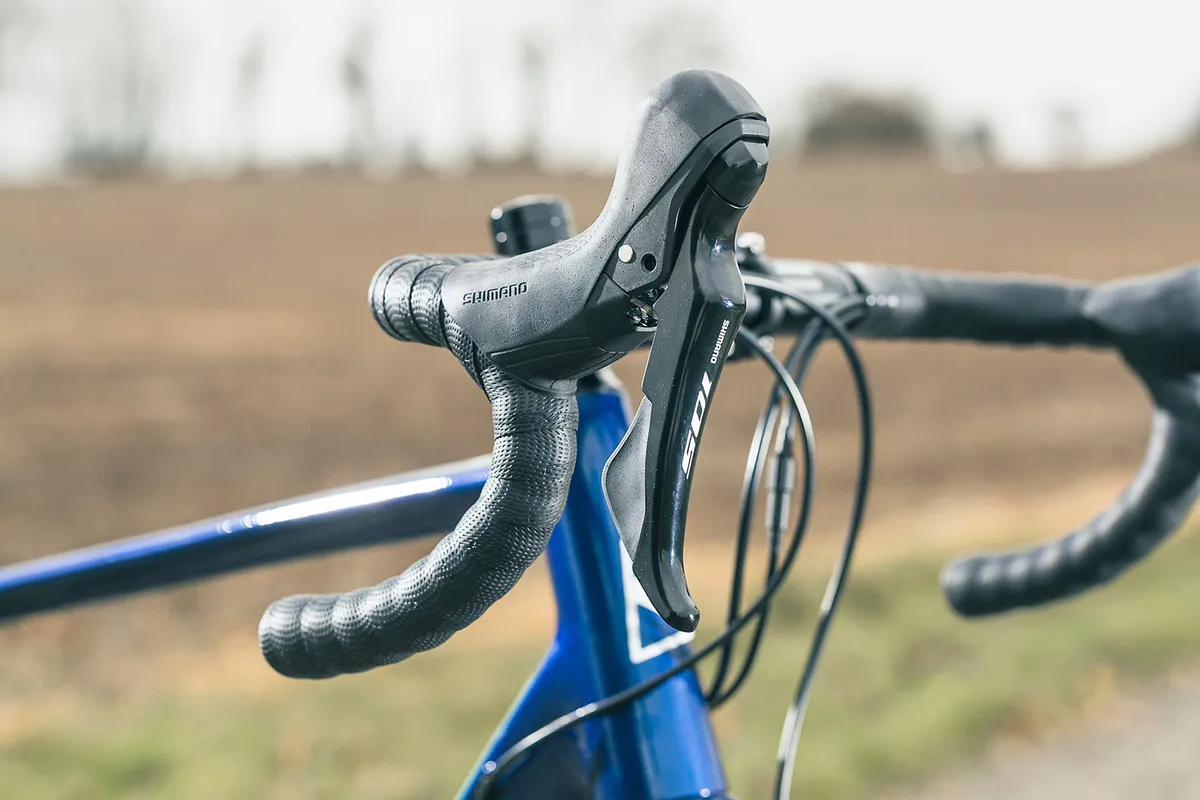
As with most semi-compact frames, it’s easy to find a good position. The medium-sized CGR AL fitted very well, with only a 10mm spacer below the 100mm stem, which gave me ideal reach.
A generous length of exposed carbon seatpost promised plenty of comfort-improving flex when in the saddle too.
I varied the tyre pressures depending on the terrain, to reduce the risk of pinch flats on rough stuff.
On tarmac, I chose 75psi as a maximum pressure, dropping as low as 55psi on gravel for my 75kg weight. I often ran the tyres somewhere in between for a sensible compromise.
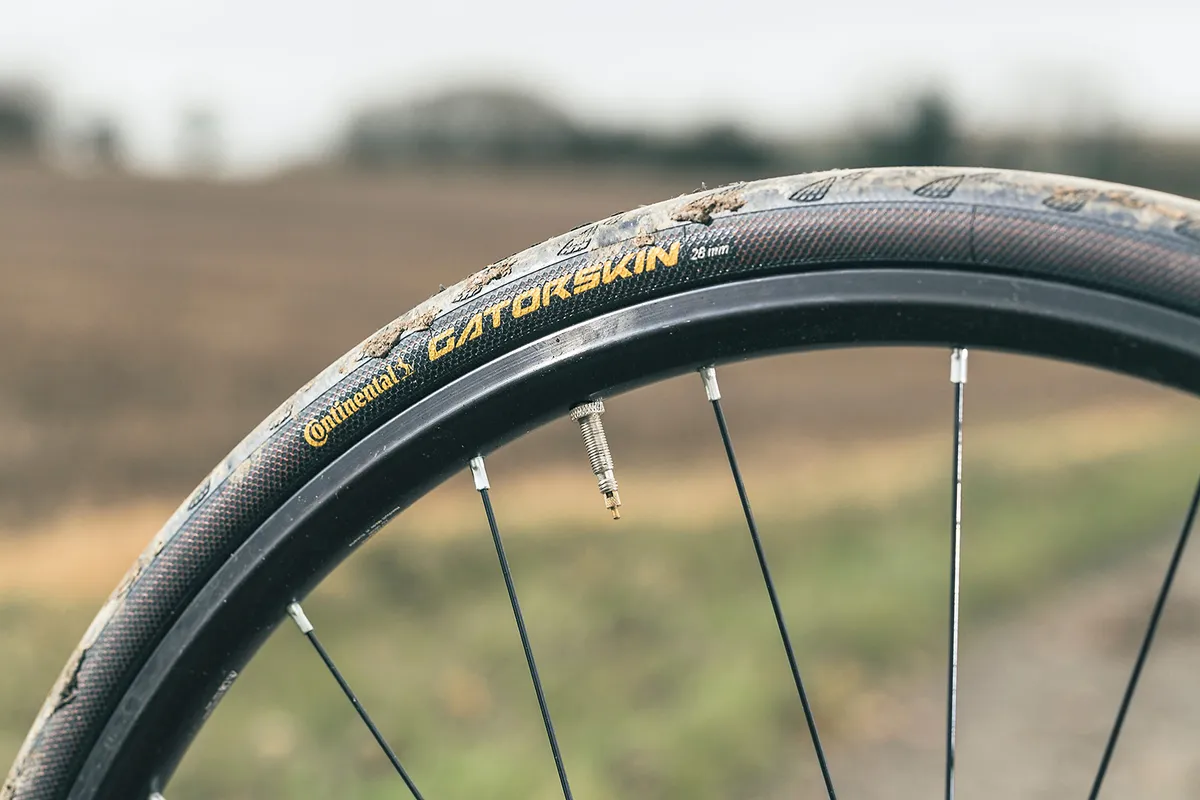
The CGR AL’s relatively light wheels and tyres, plus its overall mass, immediately give the impression that it has sufficient speed potential.
Everything feels very taut and direct with road pressures in the tyres, and a few turns of the pedals brought me efficiently to a comfortable cruising speed.
The familiar feel of Shimano’s 105 levers, and the way the gears shift effortlessly, is always very satisfying. It adds a welcome level of polish to the build.
The 105 hydraulic disc brakes are equally excellent, offering instant stopping power with well-modulated control for relatively little effort through the hands.
On the road, the CGR AL spins along at an acceptable average pace, with precise handling that feels quicker than its slack head angle might suggest.
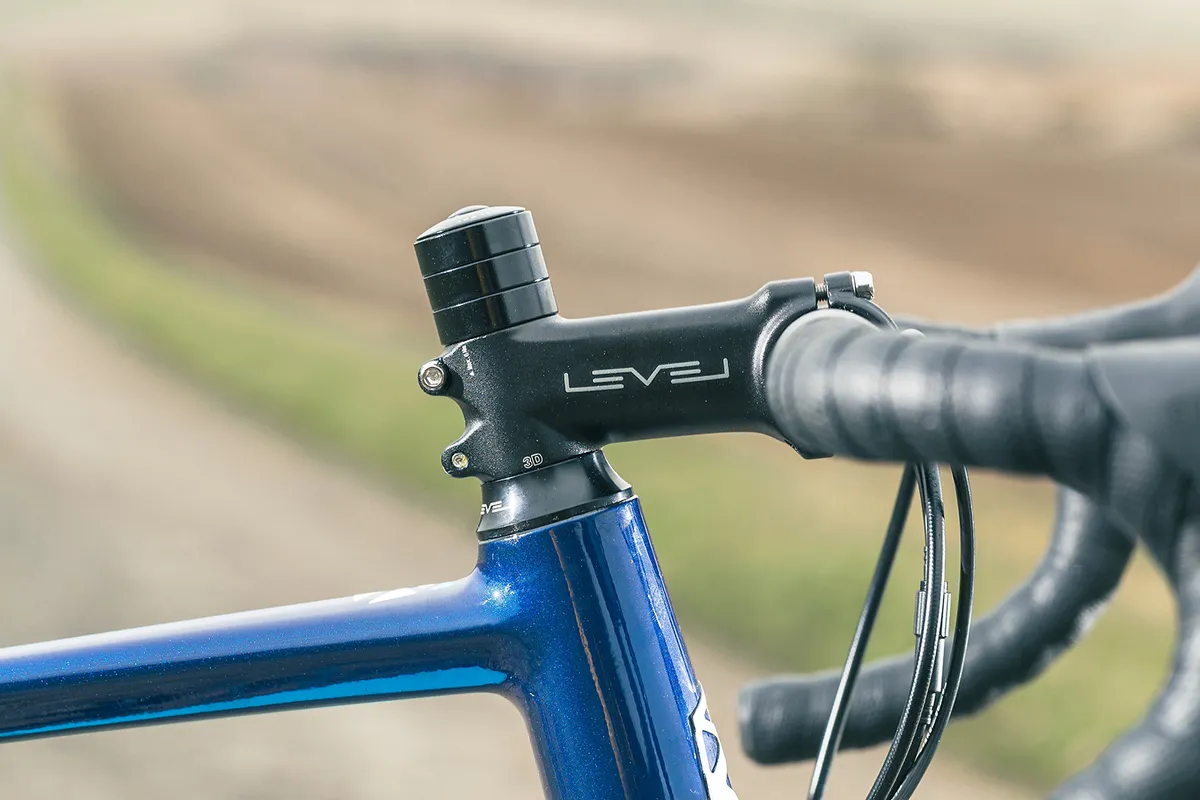
The head angle and long wheelbase bring stability at all speeds. Whether fizzing down descents, or grinding uphill with a seatpack, the Ribble is predictably easy to control.
Cornering is helped by the tyre size, with larger contact patches increasing grip for line carving, and enabling confident mid-corner line changes.
For me, Fizik’s Antares is one of the best road bike saddles, and mounted on a usefully long, 27.2mm-diameter carbon seatpost, I experienced good seated comfort even at higher tyre pressures.
It’s not the most plush bike by any means, but it’s perfectly acceptable.
That said, there’s a noticeably high level of vibration transmission through the handlebar, which is at odds with the saddle.
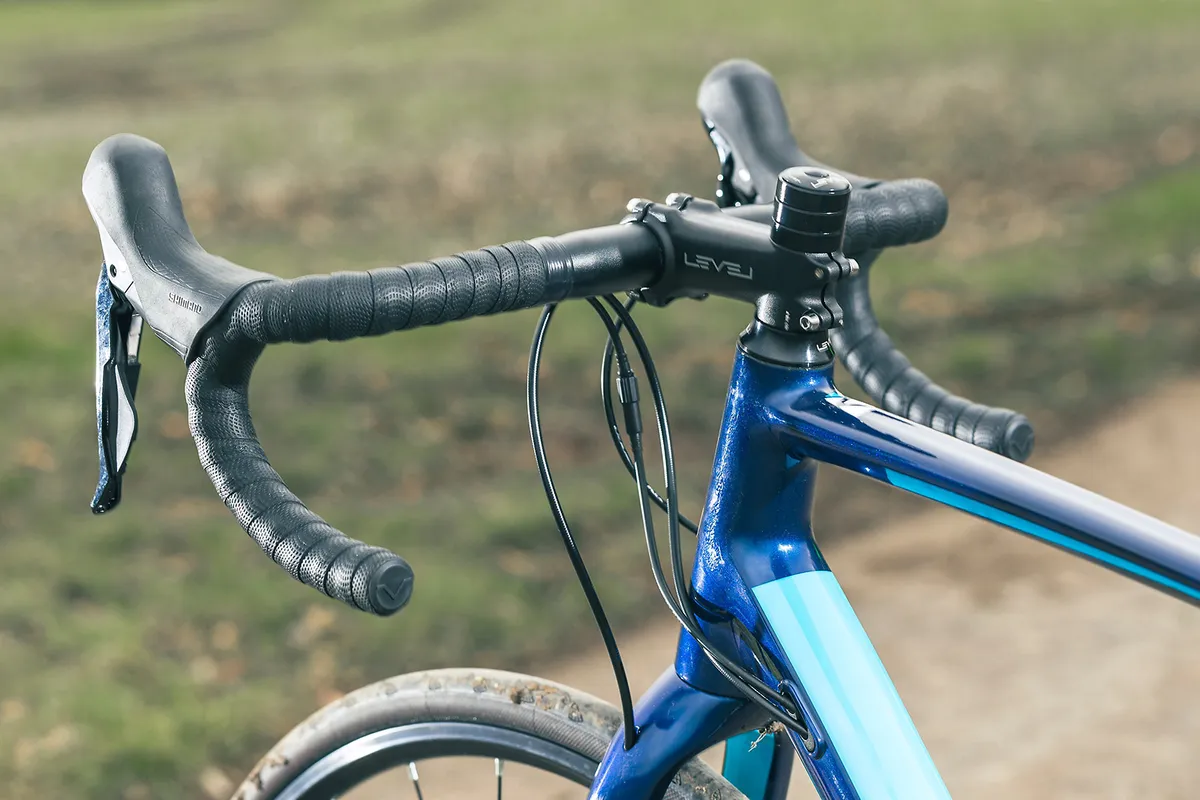
It’s not a deal breaker, and can (unsurprisingly) be improved by running lower tyre pressures. I found that just reducing tyre pressures on the road from 75psi to around 60psi resulted in a marked improvement.
Much of the CGR AL’s comfort and performance can be dictated by the tyre size and pressure chosen. Testing it in road spec limited the options, but with room for 46mm-wide mudguards, and 40mm-wide tyres, there’s scope to transform the ride.
Tyre size has a bearing on rotational mass, and so will affect the bike’s acceleration to a degree, while the other major factor is the wheels.
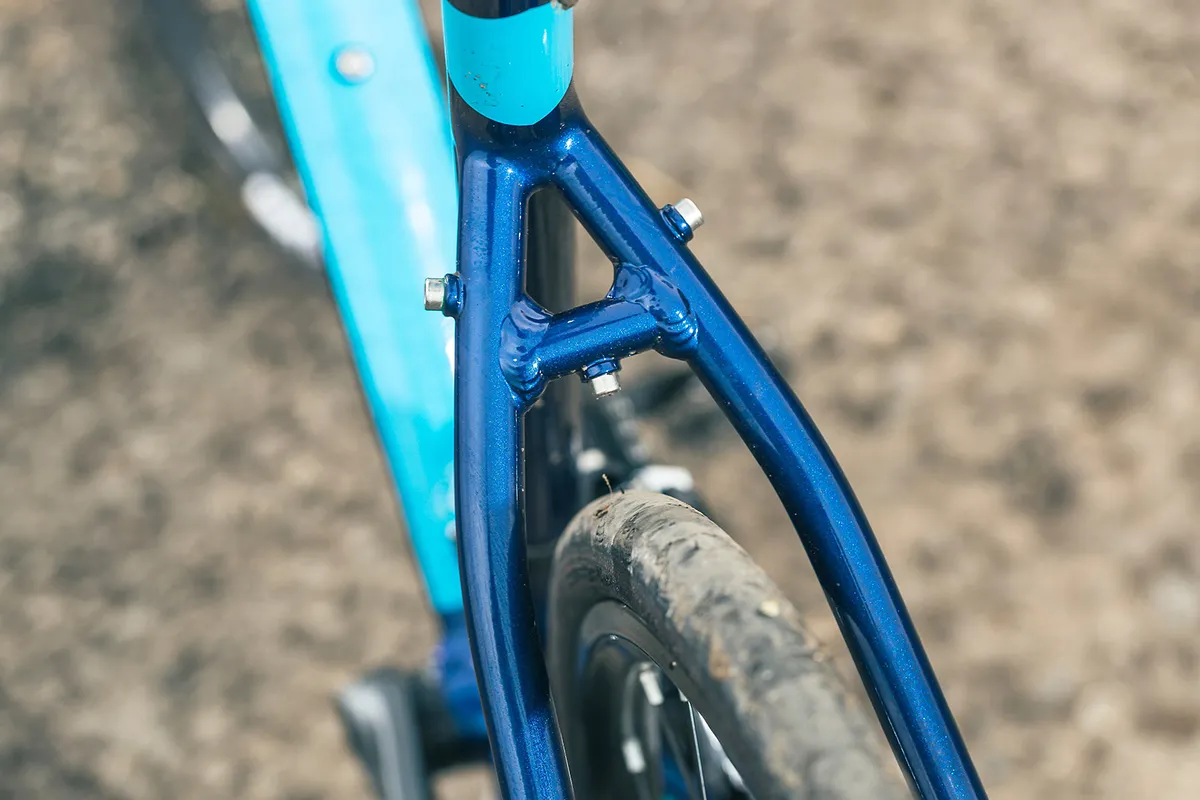
The specced Mavic Aksiums feel taut and quite lively, reacting quickly to pedalling inputs, and proving very easy to live with.
At 1,905g a set, they can spin along easily in favourable conditions, on false flats and rolling roads, but aren’t especially quick.
The gearing choice of 50/34T up front, with an 11-34t cassette at the back should cover almost every use.
There’s a high enough gear for most needs and a 1:1 lowest gear that should climb the steepest, roughest roads, even with a little luggage aboard.
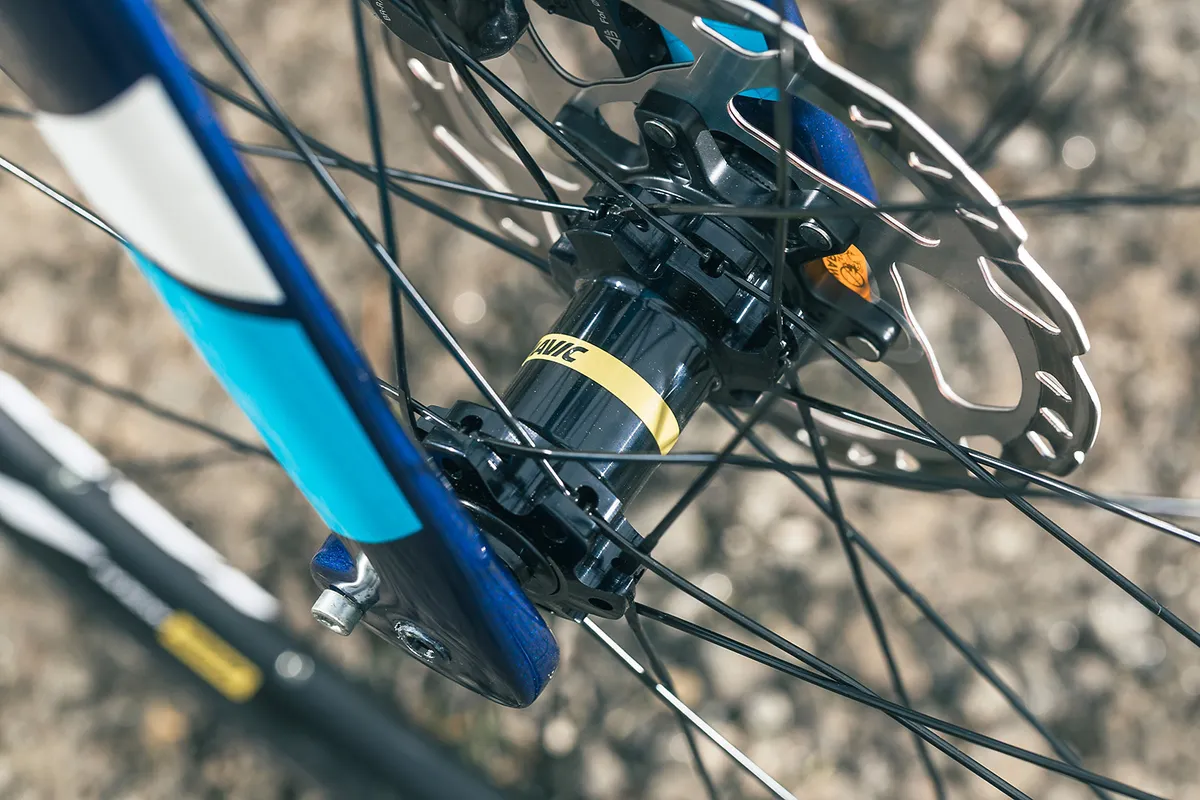
Having 11 sprockets means the gaps between gears are small versus 10- or 9-speed setups – I didn’t have any problems finding an appropriate ratio.
Riding on rougher surfaces with 28c road rubber was never going to serve up the sort of undulation-following compliance a dedicated cyclocross or gravel tyre provides.
The Ribble acquitted itself well though, even with such compromises, remaining stable and composed, despite the amplified vibrations and continual skipping around.
Its performance left me in no doubt that with more suitable tyres and tyre pressures, the CGR AL would cope easily with more severe off-road excursions.
Ribble CGR AL bottom line

The CGR AL is a purposeful, good-value choice for anyone seeking one bike to use for multiple purposes, or on mixed surfaces.
It could be a rugged commuter bike, able to resist assaults from battered roads and link together a variety of surfaces and trails. Equally, it could perform as a solid winter training bike, or go further off road as a gravel bike, even a competent cyclocross bike.
There are small compromises thanks to its non-specific design, but they are a minor, and inevitable, price to pay for versatility – plus you can customise much of this anyway.
Just select tyres that suit your intended use before purchase (or get a second pair for alternative use), and enjoy the freedom.
Product
| Brand | ribble |
| Price | 2521.00 AUD,1799.00 GBP,1694.00 USD |
| Weight | 9.3900, KILOGRAM (M/53cm) - |
Features
| Fork | CGR Disc, full carbon, tapered steerer |
| br_stem | Level 1 3D 6061 alloy |
| br_chain | Shimano HG X11 |
| br_frame | 6061-T6 heat-treated aluminium |
| Tyres | Continental Gatorskin 700x28 |
| br_brakes | Shimano 105 R7070 hydraulic disc, 160mm Shimano rotors |
| br_cranks | Shimano 105 50/34 R7000 |
| br_saddle | Fizik Antares R7 |
| br_wheels | Mavic Aksium DCL19 |
| br_shifter | Shimano 105 R7000 |
| br_cassette | Shimano 105 11-34 R7000 |
| br_seatpost | Level 2 carbon, 27.2mm |
| br_gripsTape | Level embossed |
| br_handlebar | Level 1 6061 alloy, 42cm |
| br_bottomBracket | Shimano SM-BBR60 |
| br_availableSizes | XS (47), S (51), M (53), L (55.5), XL (58) |
| br_rearDerailleur | Shimano 105 R7000 |
| br_frontDerailleur | Shimano 105 R7000 |
